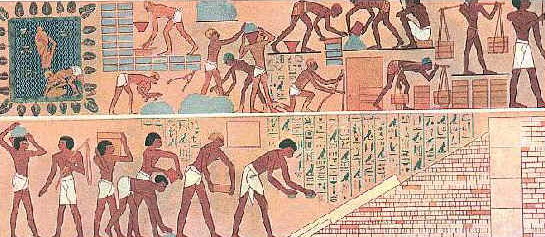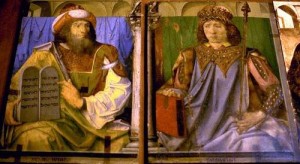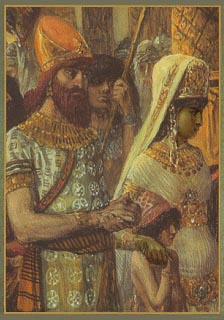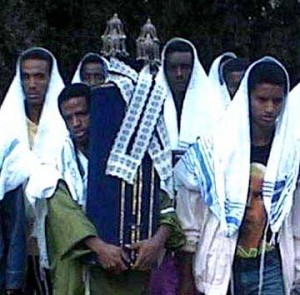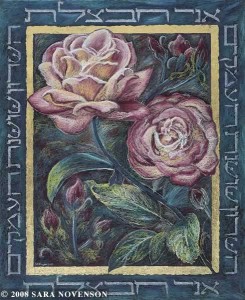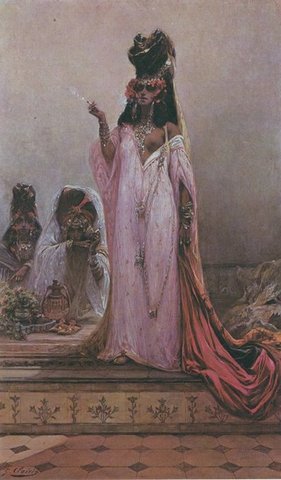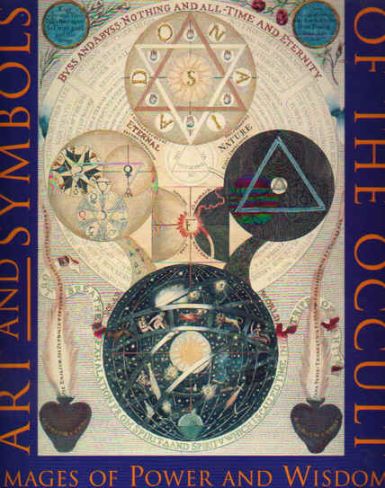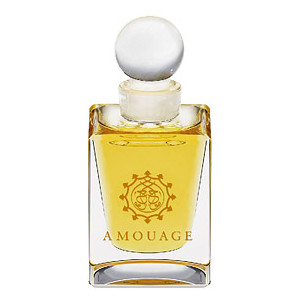I have had a theory… that when the Jews was slaves in Egypt, they learned perfume making from their Egyptian masters. When the Pharaoh finally let them free, you see the first reference to any scent in Exodus. (Before its use in perfume, incense was commonly used in the religious rituals of the ancient Egyptians)
|
And Hashem said to Mosheh [Heb. Moses] take for yourself sweet spice, stacte, and onycha with galbanum; sweet spice with pure frankincense; they shall be of equal weight. And you shall make incense of it, a frankincense like a perfumer makes; with salt, pure and holy. You shall take a portion of it, and grind it finely; and you shall place the portion before the testimony by Tent of Meeting, that I shall meet you there; holy of holies, it shall be to you. And it is said: Aharon [Heb. Aaron] shall burn therefore incense of sweet spice, every morning, when he dresses the lamp he shall burn it. And when Aharon lights the lamps at dusk, he shall burn it; a perpetual incense before Hashem, throughout your generations. |
וַיֹּאמֶר יְיָ אֶל מֹשֶׁה, קַח לְךָ סַמִּים, נָטָף, וּשְׁחֵלֶת, וְחֶלְבְּנָה, סַמִּים, וּלְבֹנָה זַכָּה, בַּד בְּבַד יְיָ: וְעָשִׂיתָ אֹתָהּ קְטֹרֶת, רֹקַח מַעֲשֵׂה רוֹקֵחַ, מְמֻלָּח טָהוֹר קֹדֶשׁ: וְשָׁחַקְתָּ מִמֶּנָּה הָדֵק, וְנָתַתָּה מִמֶּנָּה לִפְנֵי הָעֵדֻת בְּאֹהֶל מוֹעֵד, אֲשֶׁר אִוָּעֵד לְךָ שָׁמָּה, קֹדֶשׁ קָדָשִׁים תִּהְיֶה לָכֶם וְנֶאֶמַר: וְהִקְטִיר עָלָיו אַהֲרֹן קְטֹרֶת סַמִּים בַּבֹּקֶר בַּבֹּקֶר, בְּהֵיטִיבוֹ אֶת הַנֵּרֹת יַקְטִירֶנָּה: וּבְהַעֲלֹת אַהֲרֹן אֶת הַנֵּרֹת בֵּין הָעַרְבַּיִם יַקְטִירֶנָּה, קְטֹרֶת תָּמִיד לִפְנֵי יְיָ, לְדֹרֹתֵיכֶם |
From the Siddur, Seder Ketoret, Exodus 30:34-36, 7-8 -date possibly of the Exodus is 4th century
Narrowly defined, the term refers only to the departure from Egypt described in the Book of Exodus; more widely, it takes in the subsequent law-givings and wanderings in the wilderness between Egypt and Canaan described in the books of Leviticus, Numbers and Deuteronomy
I am black, but comely, O ye daughters of Jerusalem, as the tents of Kedar, as the curtains of Solomon.
Song of Solomon, 1. 5
Let us look at the text in terms not just as a love story but a perfumed trail as the followers of Moses who left Egypt settled into Judea and possibly brought their knowledge through trade throughout the Middle East.
The text is filled with all sorts of sensory references, including to the sense of smell and the power of fragrance. These are used both in terms of how the lovers depicted delight in each other and as well how the blossoming of the natural world around them echoes their passion. In chapter one, verse three one lover says “Your ointments yield a sweet fragrance” and in verse four “Although unnamed in the Song of Solomon, the Queen of Sheba is referred to by historians as Habesham and mentioned in many other works including the Koran. The children of Solomon and the queen of Sheba the modern day Ethiopians we call Falashas.
So much mystery … any interpretation shows fragrance as a language of love (but of what type of love)? The references to Solomon and the Queen of Sheba are redolent with fragrant elements. There are aromatic references to frankincense, myrrh, cedar, and rose of Sharo .The poetry of the Song of Solomon serves as an olfactive journey into a world where sexual love was revered, and not just for procreation.
Myrrh and Frankincense: the most mentioned fragrant element mentions in the Song of Solomon and, also, the most repeated. “A bundle of myrrh is my beloved unto me. He shall lie all night between my breasts. “(Song of Solomon 1:13) The speaker is expressing how precious her beloved is as myrrh was often equal in weight to the value of gold! During the days of King Solomon myrrh was not only used as a perfume for the wealthiest but also as sacred incense.Cedar is alluded to several times along with fir and woods of Lebanon. Not only are these woods aromatic but also they are strong and symbolize the desire for a lasting union for the lovers. “The beams of our house are ce dar, and our rafters of fir.” (Song of Solomon 1:17)Rose: I am the rose of Sharon (Song of Solomon, 2. 1) –The author of the Songs of Solomon is unknown and it is said it was written in 900 BC
Songs of Songs is one of the overtly mystical Biblical texts for the Kabbalah, which gave esoteric interpretation on all the Hebrew Bible. Following the dissemination of the Zohar in the 13th century, Jewish mysticism took on a metaphorically anthropomorphic erotic element, and Song of Songs was regarded as an example of this. In Zoharic Kabbalah, God is represented by a system of ten sephirot emanations, each symbolizing a different attribute of God, comprising both male and female. (Qabalahists is the term for the celebrities like Madonna that many say have made this deep study fashionable without understanding its meaning).
An allegory? A myth? A true love story? There is only one fragrance that can evoke this homage to the Song of Solomon .- Amouage Homage Attar, which was created to celebrate the 25th anniversary of the house The floral, feminine side of the composition, the rose embraces the darker, masculine side of the blend built around frankincense. This beguiling union is the perfect fragrance for the Song of Songs
Naz Ladha
This treasure is brought to you by "Naz" of The Perfume Shoppe To qualify comment on this piece what was the most interesting part of the article and name your favorite fragrance from Amouage’s on www.theperfumeshoppe.com or one you would like to try. Draw ends August 4, 2011
–Michelyn Camen Editor in Chief , with contributions from Liza Wade and Leah Stigler
I would like to mention that Ayala Sender has a fragrance called Songs of Solomons, but i have not smelled it 🙁 I hope to one day!!!

